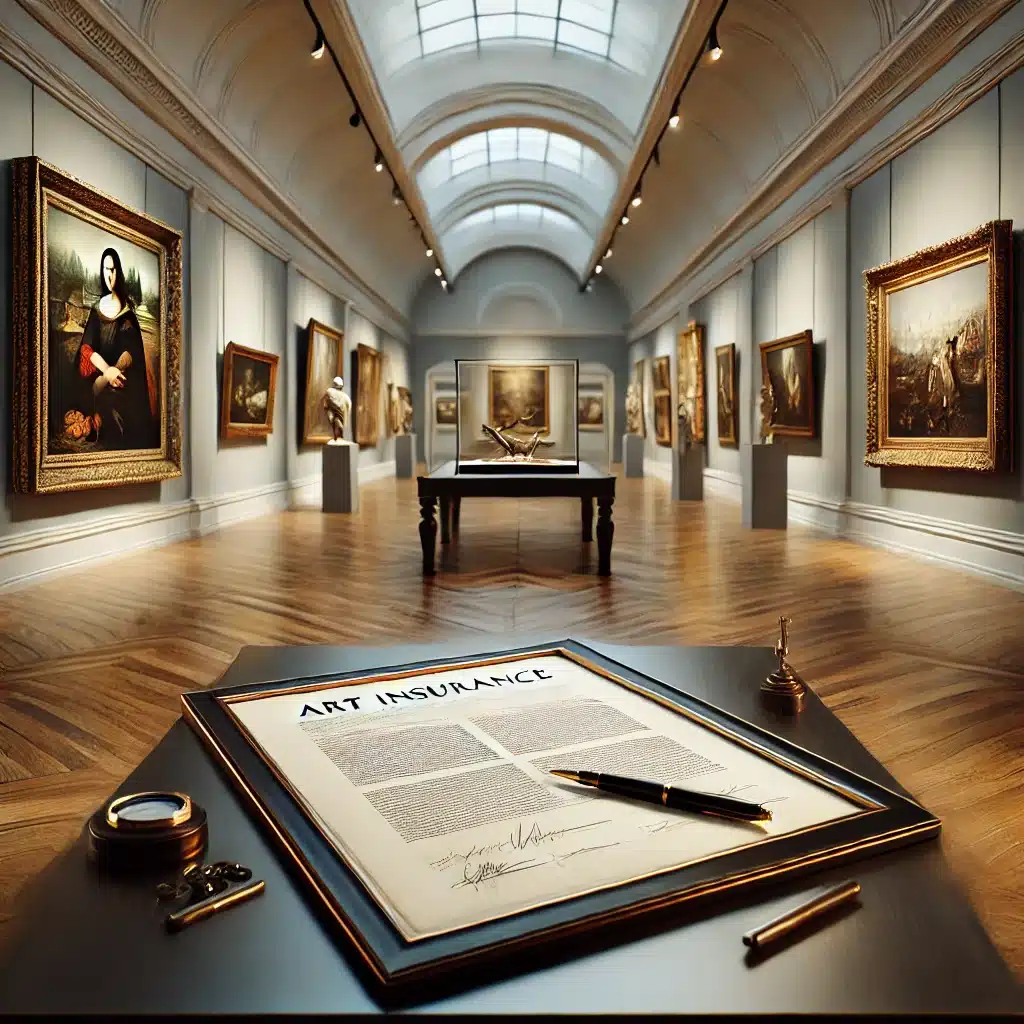Art Insurance
Introduction
Art insurance is a crucial aspect of safeguarding your valuable pieces, whether you’re an artist, collector, or art institution. With the growing value of art collections, understanding how to protect these assets is more important than ever. This guide covers everything you need to know about art insurance, from the basics of how it works to more advanced topics like insuring digital art and understanding the impact of climate change on your policy.
What is Art Insurance?
Art insurance is a specialized type of coverage that protects artworks and collectibles against risks such as damage, theft, or loss. Unlike standard homeowners insurance, which might offer limited coverage, it’s tailored to meet the unique needs of valuable art pieces. This policy ensures that in the event of unforeseen circumstances, you can recover the financial value of your art.
What Does Art Insurance Cover?
Art insurance typically covers a range of scenarios:
- Theft: Protection against loss due to burglary or robbery.
- Damage: Coverage for damage caused by accidents, natural disasters, or vandalism.
- Loss: Compensation for art that is lost during transit or other covered events.
- Restoration: Costs associated with restoring damaged artwork.
- Exhibitions: Coverage for art displayed in exhibitions or temporary locations.
- Transit: Protection for artworks during transportation.
Who Benefits from Art Insurance?
Art insurance is a vital safeguard for a wide range of individuals and institutions, including private collectors, museums, galleries, artists, and art dealers. Anyone with a significant investment in art or collectibles can benefit from this specialized protection.
When Should You Consider Art Insurance?
From the moment you acquire or create an artwork, your policy should be on your radar. Whether your art is at home, in transit, or on display, having coverage in place early on ensures you’re protected against any unexpected events that could compromise your valuable assets.
Where Does Art Insurance Apply?
Art insurance goes wherever your art goes. Whether it’s hanging in your living room, displayed in a gallery, safeguarded in a museum, or even traveling across the globe, art insurance provides peace of mind by covering your pieces no matter their location.
Why is Art Insurance Essential?
Art is more than just an investment—it’s a piece of culture, history, and personal value. It offers financial protection and peace of mind, ensuring that in the face of damage, loss, or theft, you can recover the value of your cherished pieces and protect your investment.
Which Art Insurance is Right for You?
Choosing the right art insurance involves finding a policy that matches the value, type, and specific needs of your collection. Whether you need coverage for art in transit, during exhibitions, or within a private collection, specialized insurance providers offer policies tailored to your unique requirements.
How Does Art Insurance Work?
When you insure your art, you agree on a value for each piece with your insurance provider, usually based on an appraisal. If the artwork is damaged, stolen, or lost, the insurance will either cover the cost of restoration or provide compensation based on the agreed value. Policies can be customized to cover various scenarios, including transit, exhibitions, and storage.
Why is Art Insurance Important?
Art insurance is essential because it provides peace of mind and financial protection for your valuable assets. Whether you own historical artifacts, contemporary art, or personal creations, the policy helps you mitigate risks associated with unforeseen events like natural disasters, theft, or accidental damage. Moreover, it often includes additional services such as risk management advice and appraisals, helping you maintain the value of your collection.
How Much Does Art Insurance Cost?
The cost of art insurance depends on several factors, including the value of the artwork, the location where it’s stored, and the level of coverage required. On average, policy premiums range from 1% to 2% of the artwork’s value annually. For example, insuring a piece valued at $100,000 might cost between $1,000 and $2,000 per year.
How to Reduce Art Insurance Premiums
There are several strategies for reducing your art insurance premiums without sacrificing coverage. These include increasing security measures, such as installing advanced alarm systems and climate control in storage areas, regularly updating appraisals to ensure accurate coverage, and consolidating multiple pieces under a single policy for discounts.
How to Appraise Art for Insurance Purposes
An accurate appraisal is vital for ensuring your art is appropriately insured. Appraisals should be conducted by qualified professionals who can provide a detailed report on the value of your artwork. This value will form the basis of your insurance policy, ensuring that in the event of a claim, you receive the appropriate compensation.
Insurance for Art During Estate Planning
When planning your estate, it’s essential to consider how your art collection will be handled. The policy can ensure that your collection is properly valued and protected, making the transition smoother for your heirs. This coverage can prevent disputes over the value of the art and ensure that your wishes regarding the distribution of your collection are respected.
How to Insure Art for Exhibitions and Events
When exhibiting art, either temporarily or in a traveling show, it’s crucial to have specific coverage that covers the pieces during transit and while on display. Exhibition insurance policies are designed to address these needs, offering coverage that protects against risks unique to the exhibition environment, such as handling damage or theft during the event.
Understanding Insurance for Commissioned Artworks
Commissioned artworks, created specifically for a client, can carry unique insurance needs. It’s important to insure these pieces during the creation process as well as after completion. Insurance can cover the materials, the artist’s time, and the final piece, ensuring that all parties involved are protected from potential financial losses.
Insurance Coverage for Art Damaged During Restoration
Restoration is a delicate process that can sometimes result in unintentional damage to artwork. Insurance coverage for restoration ensures that if anything goes wrong during this process, the costs associated with further repairs or even full compensation are covered. This specialized coverage is particularly important for high-value or delicate pieces.
How to Insure Art Pieces in Shared Spaces
Art displayed in shared spaces, such as offices or public buildings, may require different policy considerations. It’s important to clarify who is responsible for insuring the art and ensure that the coverage is adequate for the risks associated with the space. This includes coverage for accidental damage, theft, and public liability.
Art Insurance for Museums and Galleries
Museums and galleries have specific insurance needs due to the nature of their collections and the constant movement of pieces in and out of exhibitions. Policies for these institutions are typically comprehensive, covering everything from theft and damage to legal liabilities and loss during transportation. They may also include coverage for temporary exhibitions and loans.
How to Insure Inherited Art Collections
Inheriting an art collection comes with the responsibility of properly insuring it. The first step is to obtain a current appraisal of the pieces to determine their value. From there, you can secure a policy that covers the inherited collection, ensuring that it remains protected as it is passed down through generations.
The Future of Art Insurance in the Digital Age
As technology continues to evolve, the industry is adapting to meet new challenges. This includes the rise of digital art, the use of blockchain for verifying ownership and provenance, and the increasing importance of cybersecurity in protecting digital assets. The future of art insurance will likely see more innovations aimed at addressing these emerging risks.
Conclusion
Art is not just a financial investment but also a cultural and personal one. Insuring your art ensures that it remains protected against a wide range of risks, from physical damage to digital threats. By understanding the intricacies of art insurance, you can make informed decisions that protect your collection for years to come. For expert advice and customized coverage options, reach out to Hotaling Insurance Services.



